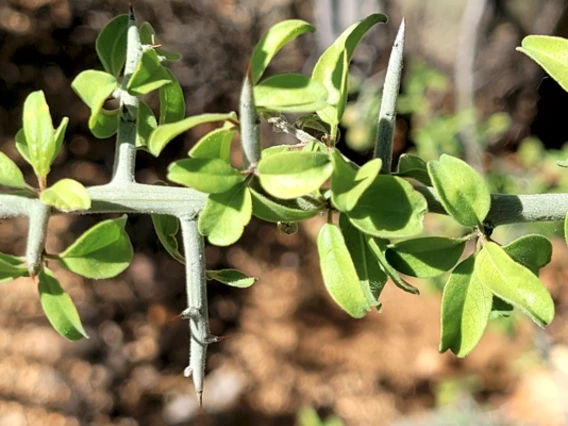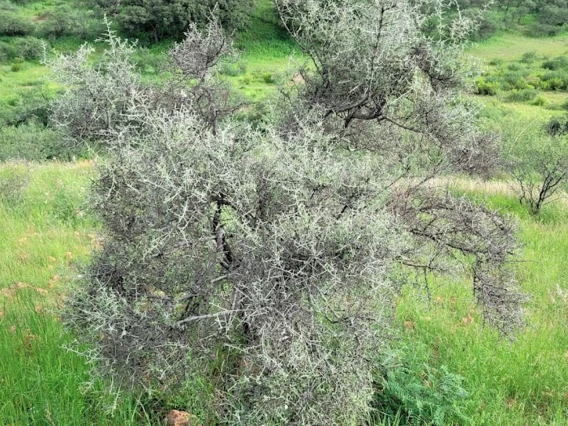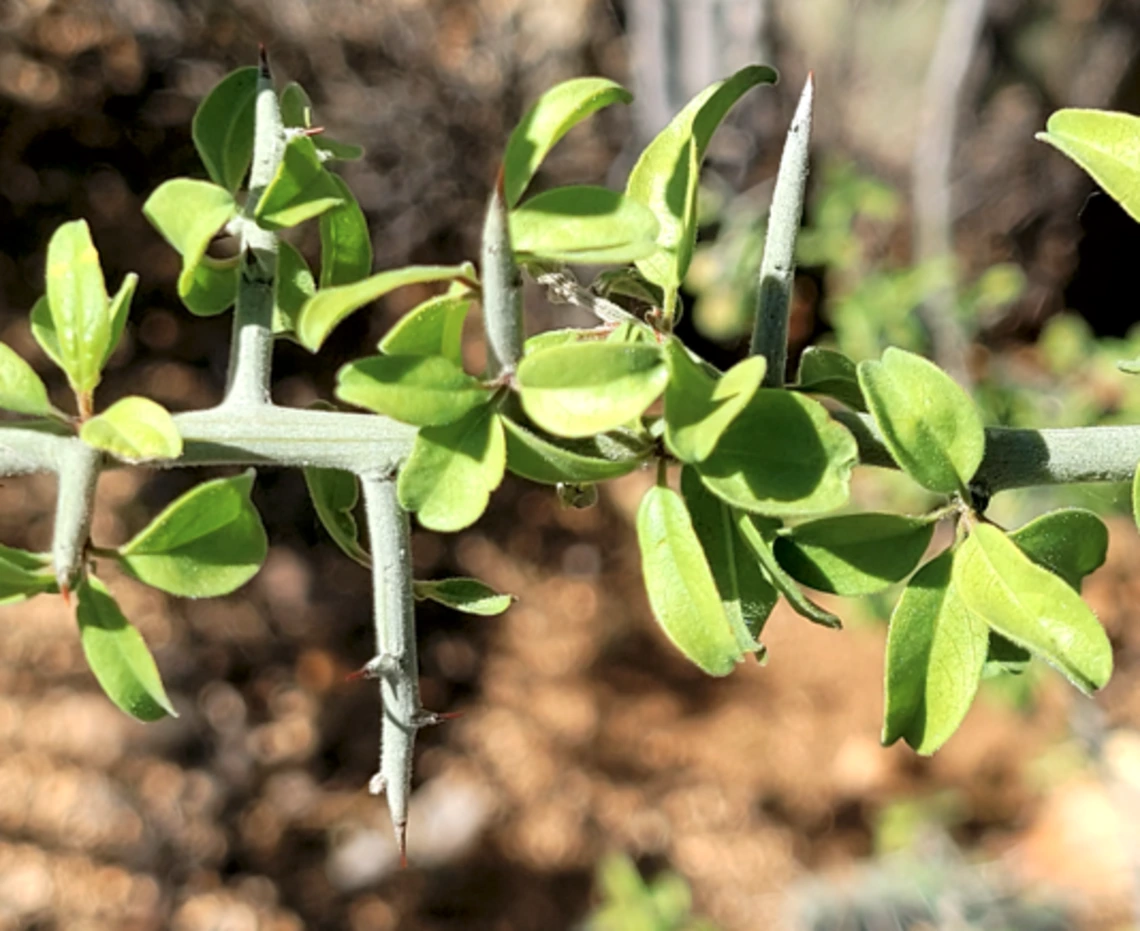Family: Rhamnaceae
Compound: Ziz obt
Synonyms: Condaliopsis obtusifolia, Sarcomphalus obtusifolius
Geographic Origin: southwestern US, northern MX
Characteristics: A medium to large, densely branched, deciduous shrub, typically reaching 4m (13ft) in height. It features stiff, spiny branches that are gray-green to blue-gray in color, providing an effective barrier against any large wildlife. The leaves are small, linear or slightly elliptical in shape, and can be thin or thick and leathery, with a dull green color that turns yellow before falling in the fall. Small, inconspicuous, star shaped yellow to orange flowers appear in the spring to summer, followed by small, round, edible fruits that mature to a dark blue or black in the late summer to fall.
Natural History: Found in arid and semi-arid regions, commonly along washes, canyons, on slopes and mesas, and in desert grasslands between 304-1524m (1,000-5,000ft) where it can form dense stands that provide shelter and food for wildlife.
Cultivation Notes: Graythorn is highly drought-tolerant and thrives in full sun to partial shade. It prefers well-drained soils and tolerates a range of soil types, from sandy to clay. Minimal watering is required once established, making it an ideal choice for xeriscaping and native gardens. This shrub can be propagated from seed or root cuttings. Pruning may be necessary to maintain the desired size and shape and to manage its spiny branches.
For general plant propagation information, click here
Ethnobotany: Fruits are edible and sweet and were eaten by indigenous peoples. It is also cultivated for use as a living fence due to its dense, thorny growth, which provides a natural barrier against trespassers and animals.
Citations:
Southwest Desert Flora. Retrieved April 30, 2024.
https://southwestdesertflora.com/WebsiteFolders/All_Species/Rhamnaceae/… obtusifolia, Lotebush.html
SEINet Arizona – New Mexico Chapter. Retrieved April 30, 2024.





